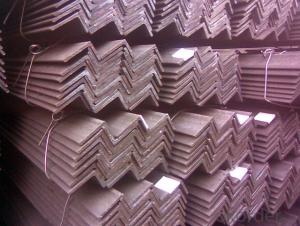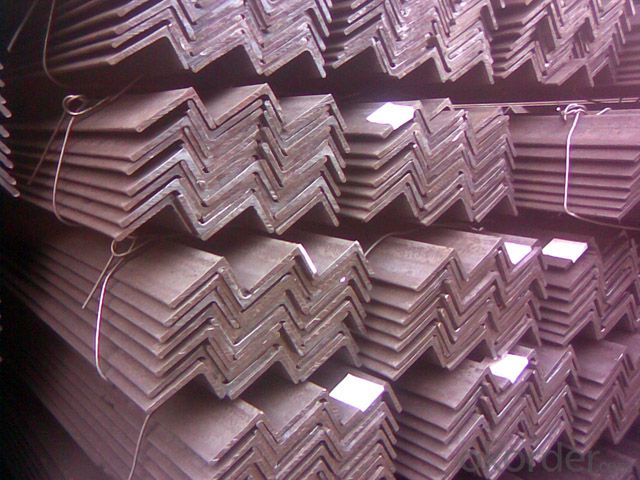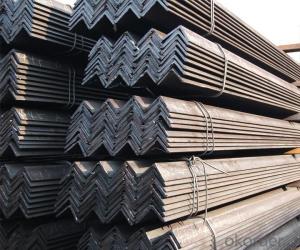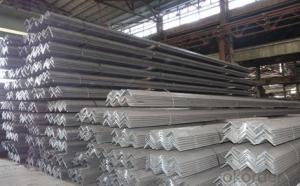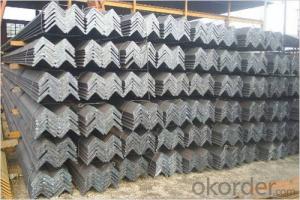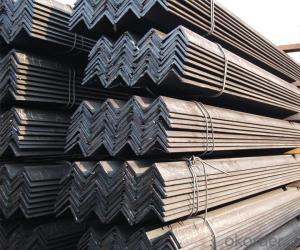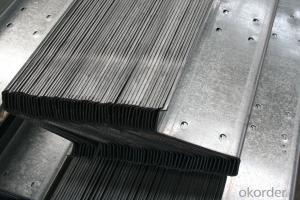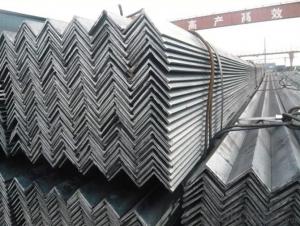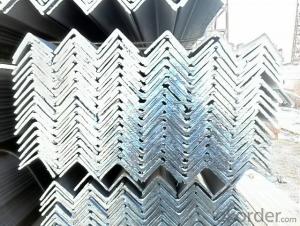Unequal Angle Steel Prime SS400 Hot Dipped Galvanized
- Loading Port:
- Tianjin
- Payment Terms:
- TT or LC
- Min Order Qty:
- 25 m.t.
- Supply Capability:
- 40000 m.t./month
OKorder Service Pledge
OKorder Financial Service
You Might Also Like
Product Description:
OKorder is offering Unequal Angle Steel Prime SS400 Hot Dipped Galvanized for Shipbuilding at great prices with worldwide shipping. Our supplier is a world-class manufacturer of steel, with our products utilized the world over. OKorder annually supplies products to European, North American and Asian markets. We provide quotations within 24 hours of receiving an inquiry and guarantee competitive prices.
Product Applications:
Unequal Angle Steel Prime SS400 Hot Dipped Galvanized are ideal for structural applications and are widely used in the construction of buildings and bridges, and the manufacturing, petrochemical, and transportation industries.
Product Advantages:
OKorder's Unequal Angle Steel Prime SS400 Hot Dipped Galvanized are durable, strong, and resist corrosion.
Main Product Features:
· Premium quality
· Prompt delivery & seaworthy packing (30 days after receiving deposit)
· Corrosion resistance
· Can be recycled and reused
· Mill test certification
· Professional Service
· Competitive pricing
Product Specifications:
JIS STANDARD ANGLE STEEL
STANDARD: JIS G 3192-2006
STEEL GRADE: JIS G 3101 SS400/ SS540
| Size | Thickness | Length |
| 40*40 | 4mm 5mm | 6-12m |
| 50*50 | 4mm5mm6mm | 6-12m |
| 63*63 | 5mm6mm8mm | 6-12m |
| 65*65 | 6mm8mm | 6-12m |
| 70*70 | 6mm | 6-12m |
| 75*75 | 6mm9mm12mm | 6-12m |
| 80*80 | 6mm7mm | 6-12m |
| 90*90 | 6mm7mm8mm10mm | 6-12m |
| 100*100 | 8mm10mm | 6-12m |
| 110*110 | 8mm10mm | 6-12m |
| 125*125 | 8mm10mm | 6-12m |
| 130*130 | 9mm12mm15mm | 6-12m |
| 140*140 | 10mm12mm14mm | 6-12m |
| 160*160 | 10mm12mm14mm16mm | 6-12m |
| 150*150 | 12mm15mm | 6-12m |
| 175*175 | 12mm15mm | 6-12m |
| 180*180 | 12mm14mm | 6-12m |
| 200*200 | 15mm20mm25mm | 6-12m |
| 250*250 | 25mm35mm | 6-12m |
FAQ:
Q1: Why buy Materials & Equipment from OKorder.com?
A1: All products offered byOKorder.com are carefully selected from China's most reliable manufacturing enterprises. Through its ISO certifications, OKorder.com adheres to the highest standards and a commitment to supply chain safety and customer satisfaction.
Q2: How do we guarantee the quality of our products?
A2: We have established an advanced quality management system which conducts strict quality tests at every step, from raw materials to the final product. At the same time, we provide extensive follow-up service assurances as required.
Q3: How soon can we receive the product after purchase?
A3: Within three days of placing an order, we will begin production. The specific shipping date is dependent upon international and government factors, but is typically 7 to 10 workdays.
Q4: What makes stainless steel stainless?
A4: Stainless steel must contain at least 10.5 % chromium. It is this element that reacts with the oxygen in the air to form a complex chrome-oxide surface layer that is invisible but strong enough to prevent further oxygen from "staining" (rusting) the surface. Higher levels of chromium and the addition of other alloying elements such as nickel and molybdenum enhance this surface layer and improve the corrosion resistance of the stainless material.
Q5: Can stainless steel rust?
A5: Stainless does not "rust" as you think of regular steel rusting with a red oxide on the surface that flakes off. If you see red rust it is probably due to some iron particles that have contaminated the surface of the stainless steel and it is these iron particles that are rusting. Look at the source of the rusting and see if you can remove it from the surface.
Images:
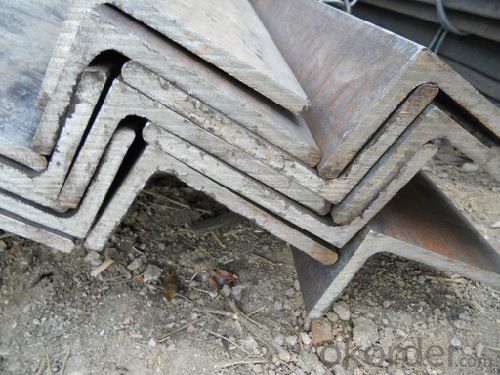
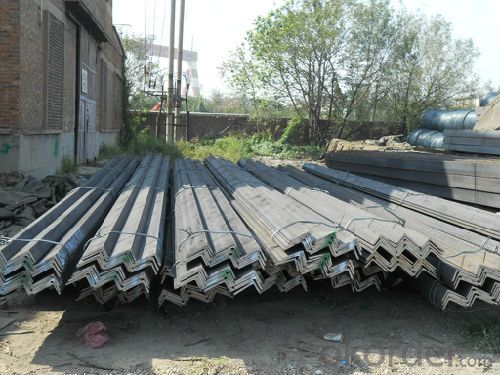
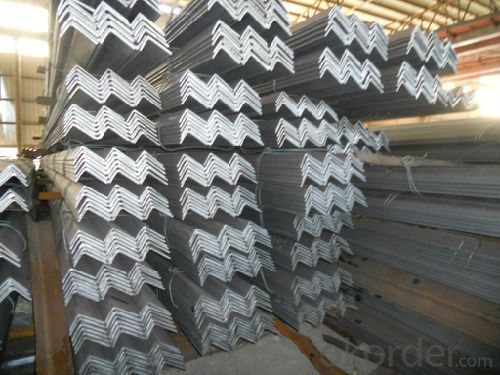
- Q: Can steel angles be used in marine or coastal environments?
- Yes, steel angles can be used in marine or coastal environments. Steel angles, also known as angle irons, are commonly used in various construction projects, including those in marine or coastal environments. However, it is essential to choose the right type of steel angle with appropriate corrosion resistance properties to withstand the harsh conditions of saltwater, moisture, and constant exposure to sea spray. Stainless steel angles are an excellent choice for marine or coastal applications due to their superior corrosion resistance. Stainless steel contains chromium, which forms a protective oxide layer on its surface, preventing rust and corrosion. This makes stainless steel angles highly resistant to the corrosive effects of saltwater and moisture. Galvanized steel angles are another viable option for marine or coastal environments. Galvanization involves coating steel with a layer of zinc, which acts as a sacrificial barrier against corrosion. This protective zinc coating helps prevent the underlying steel from rusting and deteriorating in saltwater or high humidity conditions. It is crucial to ensure proper maintenance and care of steel angles in marine or coastal environments. Regular inspection, cleaning, and applying appropriate protective coatings can help extend the lifespan of steel angles and maintain their integrity against the corrosive elements. In summary, steel angles can indeed be used in marine or coastal environments. However, it is necessary to select the right type of steel angle with suitable corrosion resistance properties, such as stainless steel or galvanized steel, and maintain them properly to ensure their longevity and structural integrity.
- Q: Can steel angles be used as supports for solar panels?
- Yes, steel angles can be used as supports for solar panels. Steel angles are commonly used in construction due to their strength and durability. When properly designed and installed, steel angles can provide a sturdy and reliable support structure for solar panels. They can be easily welded or bolted together to create a secure framework that can withstand the weight of the panels and any environmental factors such as wind loads. Additionally, steel angles can be galvanized or coated to enhance their resistance to corrosion, making them suitable for outdoor applications such as solar panel installations.
- Q: Are there any environmental concerns associated with steel angles?
- Steel angles are associated with various environmental concerns. The production process involves extracting iron ore, mining coal for coke production, and emitting greenhouse gases during steelmaking. These activities contribute to deforestation, air pollution, and climate change. Furthermore, disposing of steel angles at the end of their life cycle can be problematic. Steel is not biodegradable and can take hundreds of years to decompose in landfills. Improper disposal can contaminate soil and water, posing risks to ecosystems and human health. Moreover, transporting steel angles from production facilities to construction sites can lead to carbon emissions and air pollution. The energy needed for transportation increases the overall environmental impact. To address these concerns, several strategies can be implemented. Firstly, using recycled steel instead of virgin steel significantly reduces the environmental footprint. Additionally, employing energy-efficient technologies in the production process can minimize greenhouse gas emissions. Lastly, responsibly disposing and recycling steel angles at the end of their life cycle helps reduce the environmental impact.
- Q: Are steel angles suitable for earthquake-resistant construction?
- Steel angles can indeed be suitable for earthquake-resistant construction. Steel is a material known for its high strength and ductility, making it ideal for withstanding seismic forces. Steel angles, in particular, are commonly used in seismic design and construction due to their ability to provide structural stability. Steel angles are often used as bracing elements in buildings to resist lateral forces caused by earthquakes. They can be installed diagonally between structural members to create a rigid frame that can effectively absorb and dissipate seismic energy. These angles help distribute the forces generated during an earthquake and prevent the collapse of the structure. Furthermore, steel angles can be designed and fabricated to meet specific seismic design criteria. The design can take into account factors such as the building's location, expected seismic activity, and the desired level of earthquake resistance. By using advanced computer-aided design and analysis tools, engineers can optimize the placement and size of steel angles to enhance the overall seismic performance of the structure. In addition to their strength and ductility, steel angles offer other advantages for earthquake-resistant construction. They are lightweight, which reduces the overall weight of the structure and allows for more efficient seismic design. Steel is also a recyclable material, making it a sustainable choice for construction projects. However, it is important to note that the suitability of steel angles for earthquake-resistant construction depends on several factors, including the specific design, construction techniques, and adherence to building codes and regulations. Professional engineering expertise and thorough analysis are necessary to ensure the appropriate use of steel angles in seismic design. In summary, steel angles are suitable for earthquake-resistant construction due to their strength, ductility, and ability to provide structural stability. When properly designed and installed, they can effectively resist seismic forces and contribute to the overall safety and resilience of the structure.
- Q: Can steel angles be used for reinforcement in concrete structures?
- Indeed, it is possible to utilize steel angles to reinforce concrete structures. These steel angles, referred to as L-shaped steel profiles, are frequently employed as reinforcing bars in the construction of concrete. Their purpose is to augment the strength and stability of the concrete structure, particularly in regions necessitating additional support. Typically, these steel angles are positioned within the concrete forms to ensure appropriate alignment and spacing, subsequently becoming embedded in the concrete during the pouring process. This reinforcement serves to prevent the occurrence of cracks and heightens the overall structural integrity of the concrete structure. Due to their versatility, steel angles are applicable in various concrete applications including beams, columns, walls, and slabs.
- Q: How do you calculate the axial load capacity of a steel angle?
- To calculate the axial load capacity of a steel angle, you need to consider several factors including the material properties of the angle, its dimensions, the type of loading, and the safety factor. First, you should determine the yield strength of the steel angle. This value represents the maximum stress the angle can withstand without permanent deformation. The yield strength can be obtained from the steel angle's specifications or by conducting material testing. Next, you need to measure the dimensions of the angle, including its length, thickness, and width. These values are crucial in determining the area of the cross-section of the angle. Once you have the yield strength and the cross-sectional area, you can calculate the axial load capacity using the formula: Axial load capacity = Yield strength × Cross-sectional area It is important to note that this formula assumes that the angle is subjected to direct axial loading. If the angle is subjected to combined loading or other complex loading conditions, additional calculations or structural analysis may be required. Moreover, it is customary to apply a safety factor to the calculated axial load capacity to account for uncertainties and ensure structural integrity. The safety factor is typically determined based on the specific application and industry standards. For example, a safety factor of 1.5 is commonly used in structural design. In summary, to calculate the axial load capacity of a steel angle, you need to know its yield strength, measure its dimensions, and apply the appropriate safety factor. This calculation provides an estimate of the maximum load the angle can bear without failure under axial loading conditions.
- Q: How do you calculate the stability of a steel angle column?
- Determining the stability of a steel angle column involves considering several crucial factors. The first step is to calculate the slenderness ratio of the column, which is the ratio between its effective length and its least radius of gyration. This can be done using the following formula: Slenderness ratio = (Effective length of column) / (Least radius of gyration) To find the least radius of gyration, the dimensions of the angle section must be used. For a steel angle, an approximation can be made by taking the average of the two legs of the angle section and dividing it by the square root of 3. Once the slenderness ratio is determined, it is necessary to assess whether the column is classified as long or short. If the slenderness ratio is below the critical value, typically around 50 for an angle column, it is considered short, and its stability primarily depends on its strength. In such cases, the column can be designed based on its ability to resist axial compression and flexural buckling. However, if the slenderness ratio surpasses the critical value, the column is classified as long, and its stability depends on its capacity to resist lateral-torsional buckling. In these instances, additional calculations and considerations are required to ensure the column remains stable. For long angle columns, the critical load at which lateral-torsional buckling may occur can be determined using various formulas and methods, such as the Euler formula, the Perry-Robertson formula, or finite element analysis. These calculations take into account various parameters, including the moment of inertia, modulus of elasticity, and length of the column. It is important to acknowledge that stability calculations for steel angle columns can be intricate and necessitate expertise in structural engineering. It is strongly advised to consult with a qualified professional or refer to relevant design codes and standards, such as the American Institute of Steel Construction (AISC) Manual, for accurate and reliable calculations.
- Q: How do you prevent galvanic corrosion between steel angles and aluminum components?
- To prevent galvanic corrosion between steel angles and aluminum components, there are several measures you can take: 1. Use a barrier: Apply a barrier between the steel and aluminum surfaces, such as a non-conductive coating or a layer of paint. This will create a physical barrier that prevents direct contact between the two metals, reducing the likelihood of galvanic corrosion. 2. Apply insulating tape or gaskets: Place insulating tape or gaskets made of non-conductive materials, such as rubber or plastic, between the steel angles and aluminum components. This acts as a buffer, preventing direct contact and minimizing the risk of galvanic corrosion. 3. Select compatible metals: When designing or choosing components, opt for metals that are more compatible with each other. For instance, using stainless steel or galvanized steel instead of regular steel can reduce the risk of galvanic corrosion when paired with aluminum. 4. Use isolation techniques: Isolate the steel angles and aluminum components using isolation techniques such as plastic or rubber spacers. These spacers separate the metals, preventing direct contact and minimizing the potential for galvanic corrosion. 5. Apply corrosion inhibitors: Apply corrosion inhibitors, such as special coatings or compounds, to the steel and aluminum surfaces. These inhibitors create a protective layer that helps prevent galvanic corrosion. 6. Control the environment: Galvanic corrosion is accelerated in the presence of moisture, saltwater, or acidic environments. Minimize the exposure of steel angles and aluminum components to these corrosive elements by ensuring proper ventilation, drainage, and maintaining appropriate protective coatings. It is important to carefully consider the specific requirements and conditions of your application when choosing the most appropriate method or combination of methods to prevent galvanic corrosion between steel angles and aluminum components. Consulting with corrosion experts or engineers can provide valuable insights and guidance tailored to your specific situation.
- Q: Are steel angles suitable for manufacturing equipment enclosures?
- Yes, steel angles are suitable for manufacturing equipment enclosures. Steel angles provide excellent strength, durability, and stability, making them ideal for constructing sturdy enclosures to protect equipment. They are also versatile and can be easily welded or bolted together to form the desired shape and size for the enclosure. Additionally, steel angles can withstand various environmental conditions and offer protection against impacts and other potential hazards.
- Q: What are the typical fabrication processes involved in manufacturing steel angles?
- The typical fabrication processes involved in manufacturing steel angles include cutting, bending, welding, and finishing. The first step in the fabrication process is cutting, where the steel is cut into the desired length or size. This can be done using various methods such as sawing, shearing, or plasma cutting. After cutting, the steel angle may need to be bent to achieve the desired shape. This can be done using a press brake or a rolling machine. Bending helps in creating the required angle and ensuring the steel has the necessary strength and stability. Once the steel angle is cut and bent, it may need to be welded to join the different pieces together. Welding is a crucial process that ensures the strength and integrity of the steel angle. It involves heating the steel to its melting point and fusing the pieces together using a filler material. Finally, the steel angle goes through a finishing process. This may include surface cleaning, grinding, or polishing to remove any imperfections or rough edges. The finishing process helps in enhancing the appearance of the steel angle and also improves its corrosion resistance. Overall, the fabrication processes involved in manufacturing steel angles are cutting, bending, welding, and finishing. These processes are essential in creating steel angles that meet specific design requirements and quality standards.
Send your message to us
Unequal Angle Steel Prime SS400 Hot Dipped Galvanized
- Loading Port:
- Tianjin
- Payment Terms:
- TT or LC
- Min Order Qty:
- 25 m.t.
- Supply Capability:
- 40000 m.t./month
OKorder Service Pledge
OKorder Financial Service
Similar products
Hot products
Hot Searches
Related keywords
